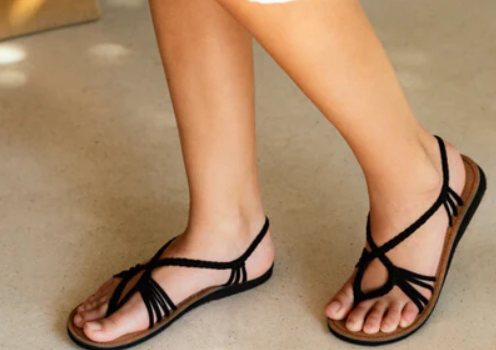
When it comes to footwear, comfort is key—whether you’re wandering through city streets or enjoying a day at the beach. Sandals are often chosen for their breezy and stylish feel, but they can sometimes leave you with sore feet or blisters. Thankfully, there are several simple ways to enhance the comfort of your sandals without sacrificing style. From picking the right size to adjusting straps and adding insoles, here’s how to make your sandals more comfortable for all-day wear.
Choosing the Right Size
The first step in achieving comfort is ensuring you’re wearing the right size. The correct size sandal should support your foot properly, reducing the risk of blisters and pain. Here’s how to find the best fit:
Measure Your Feet:
Even if you think you know your size, it’s always worth measuring your feet to be sure. Foot size can change over time, and you want to make sure your sandals aren’t too tight or too loose.
Try Them On Later in the Day:
Since feet tend to swell as the day progresses, try on sandals when your feet are at their largest to ensure the best fit.
Check for Arch Support:
Look for sandals with proper arch support. This helps ensure the sandal aligns with your foot’s natural structure, providing comfort and preventing foot pain.
Look for Adjustable Straps:
Opt for sandals with adjustable straps, which allow you to customize the fit and make minor adjustments throughout the day for added comfort.
Use Insoles for Extra Comfort
Insoles are a quick and effective way to enhance the comfort of your sandals. They provide extra cushioning and support, making long walks or standing periods much more comfortable. Here are some types of insoles you can try:
- Gel Insoles: Ideal for shock absorption, gel insoles make walking feel much softer and help reduce pressure.
- Foam Insoles: These conform to your foot’s shape for a personalized fit, offering great comfort for everyday wear.
- Arch Support Insoles: If you need additional support, these are perfect for maintaining your foot’s natural shape and distributing pressure evenly.
If your sandals aren’t designed to accommodate insoles, consider adding padding to trouble spots or choosing sandals with quality, supportive soles from the start.
Maintain Foot Hygiene
Clean and healthy feet are essential for sandal comfort. Proper foot hygiene helps prevent discomfort, such as odor, blisters, or infections. Here are some simple steps to keep your feet fresh:
- Wash Daily: Clean your feet thoroughly with soap and water, making sure to clean between your toes to avoid bacterial build-up.
- Dry Completely: After washing, ensure your feet are completely dry to prevent fungal infections.
- Moisturize: Apply a good foot cream to keep your feet soft and prevent cracks, which can lead to discomfort in sandals.
- Trim Nails Regularly: Keep toenails trimmed to avoid painful, ingrown nails that can make walking in sandals uncomfortable.
Adjust the Straps for a Secure Fit
Adjusting the straps on your sandals is crucial to ensuring they fit properly and comfortably. Straps that are too tight can cause discomfort, while loose straps may cause your feet to slide around.
- Tighten or Loosen Evenly: Adjust each strap to hold your feet securely without restricting movement. Start with the toe strap, then move to the ankle and other straps, ensuring each one fits comfortably.
- Check Flexibility: Ensure the straps allow for enough flexibility, so your feet don’t feel pinched or overly constrained.
Break in Your Sandals
New sandals often require a little break-in time before they feel truly comfortable. By softening the material, you can reduce the risk of blisters or chafing. Here’s how to break in your sandals:
- Wear Them Indoors First: Start by wearing your new sandals at home for short periods, gradually increasing the wear time each day.
- Flex and Bend: Gently bend the sandals to soften the material and help them mold to the shape of your feet.
Comfort Tips for Different Sandal Styles
Different types of sandals may require specific adjustments to improve comfort. Here’s how to handle the most popular styles:
- Flip-Flops: While great for casual wear, flip-flops can be hard on your feet. Choose pairs with thick soles or built-in arch support to reduce discomfort. If the strap rubs, apply petroleum jelly to protect your toes.
- Wedges & Heeled Sandals: To make heeled sandals more comfortable, choose platforms or chunky heels instead of stilettos. Add extra cushioning to the heels to reduce pressure, especially if you’re going to be standing for long periods.
- Slides: If your slides tend to slip off, add a stick-on sole gripper to keep them securely in place without sacrificing style.
Final Thoughts
There’s no need to sacrifice style for comfort when it comes to sandals. By taking the time to select the right size, adding insoles for support, maintaining foot hygiene, adjusting straps, and breaking in your sandals, you can walk comfortably without giving up on fashion. Whether you’re heading to the beach or strolling through the city, these tips will ensure your sandals keep you feeling good all day long.










